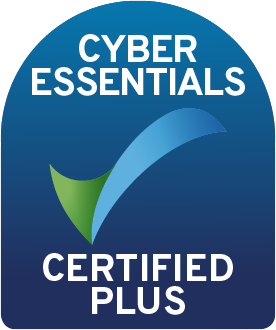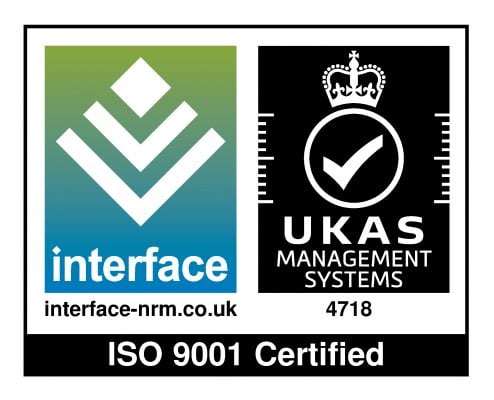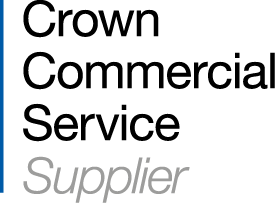The overarching goal of using a learning management system (LMS) is to achieve an effective learning and development strategy. Whether you’re using your LMS for onboarding, compliance training, continuous learning and development or some combination of these, achieving your LMS goals can be hard to do if you’re not using your LMS with your learners in mind.
Although your LMS may have been carefully designed to align with your business needs, if your learners aren’t responding well to their learning programmes then you may need to rethink your strategy.
Your LMS is capable of effectively serving the needs of your business or organisation and achieving your L&D goals whilst making it user friendly, exciting and interesting for learners. However, if your learners are feeling underwhelmed by your current LMS or you’re looking to ensure that you get it right as you look to implement a new LMS, we’ve put together some of the common mishaps you need to avoid.
Using our years of industry experience, we’ve also offered some proven solutions to get you back on track.
1. You’re not listening to your learners
Although using an LMS will benefit managers, teachers, trainers, the L&D team and a huge number of individuals within your business or organisation, your primary focus when creating an LMS strategy should be understanding and meeting the needs of your learners.
If your learners aren’t getting what they want and need out of your LMS then they absolutely will feel disinclined to use and engage with the LMS platform. Take the time to gather feedback from learners to understand what they want to see from your LMS. Focus on discussing areas such as how they best learn (for example, do they learn through interactive learning, reading, visual aids etc.), the type of content they want to see, and how, when or where they are using the platform.
To gather this information, you can create focus groups, discussion boards, polls or surveys within your LMS. Use this information to shape your LMS strategy; for example, if learners are completing lessons in short windows during the day (such as a lunch break), then try introducing microlearning style lessons. Having these readily available on your LMS means users are given a voice and can have an active part to play by providing their feedback, ensuring your LMS is continuously evolving in order to meet the current needs of your learners.
2. Your LMS strategy isn’t customised and tailored to individuals
One of the most common ways your learners can feel let down by your LMS is if they feel like the content isn’t relevant to them. For example, a recently hired senior IT manager having to complete beginner lessons in how to use Excel in their onboarding programme.
The learning programmes and content available through your LMS should be catered specifically to an individual user profile. Employees can be categorised into groups based on variables such as job roles, skill level or department. Using the example of the senior IT manager, rather than completing a standard onboarding programme used by all new employees, they will follow a programme that is relevant to their job role, function and skill level.
This may seem like a complex task which can overcomplicate your LMS strategy. However, with a flexible and intelligent LMS, it can be easy to achieve. You’ll want to lean on your hierarchies functionality for this as you can use it to create customised learning paths for individuals based on any number of variables. And once you’ve defined the relevant criteria, the learning paths will automatically be assigned to those specific users, meaning they will only see content that is relevant to them.
3. Your platform isn’t visually appealing
Your LMS isn’t simply a platform to house your e-learning documents. It needs to have an identity; it needs to be aesthetically appealing and visually engaging. The average learner is used to accessing websites, apps and social media platforms that place a great deal of emphasis on the way they look as well as the functionality. If your LMS user experience isn’t visually appealing users are likely to feel underwhelmed.
Every business knows how important it is to develop a strong brand identity – one that is easily recognisable by internal and external members. This needs to be the same for your LMS. Use your customisation options to align your platform with your brand guidelines and chosen colour palette. Take the time to include relevant logos, imagery and colours where possible. Additionally, make sure your platform is easy to use and navigate with a clear indication of how to travel around the platform whilst ensuring the home page is a central learning hub housing essential documents or links.
4. You’re not prioritising content variety
The modern learner is used to consuming a wide variety of content from a number of platforms and devices. Traditionally, teaching has been associated with either lecture style lessons or simply reading text in the hope of retaining information. However, relying on traditional text content no longer achieves the level of engagement and knowledge retention required to adequately train or teach the modern learner.
There are so many options when it comes to the type of content you can include in your LMS. Adapt your LMS strategy and dedicate the time to evaluate which lessons would benefit from being delivered in a format other than the typical text or PowerPoint slide document.
Look to include, interactive lessons such as branching scenarios, videos, audio clips, comprehension exercises, infographics etc. Enriching your e-learning platform with variety is a sure way to keep learners engaged and more inclined to return and further their learning.
5. Incorporate gamification into your strategy
If your lessons are simply a tick box exercise, where the learner merely needs to read or watch a lesson in order to complete it, you may find that they don’t have the motivation to carry out what seems to be a fruitless exercise.
Try introducing gamification-style lessons into your LMS such as quizzes, and interactive games along with badges and leader boards to boost healthy competition amongst learners. This has proven to be an effective way to boost motivation and engagement as 80% of US workers believe game-based learning is more engaging.
6. You’re not making the most of evaluations and analytics
When learners are dedicating their time to complete lessons and study, they can soon feel underwhelmed if they’re not seeing results or benefits from doing so. Using your analytics and reporting functions is one of the most effective ways to counteract this, in fact 80% of L&D professionals say that reporting and analytics features are the most important in an LMS platform.
One approach here would be to include quizzes or end of course tests. This is a great way not only for you to see where their knowledge level sits but also for learners to see where they are succeeding and where they could improve. Your LMS should allow you to create automatic reports which can be distributed to managers/teachers and to individual learners.
Use the data provided by your reporting features to single out individuals who are showing great improvement or potential, chatting with them about their proven success not only drives motivation but will help you find any employees who have the potential to move forward in the business.
7. You’re only using your LMS for onboarding and compliance
If you’re encouraging your learners to use your LMS frequently but you’re noticing their reluctance to revisit the platform, it may be because your LMS strategy is fundamentally designed to focus on a single area such as onboarding or compliance training.
When designing your LMS, you need to make it an ongoing information hub at the epicentre of your L&D strategy. Make sure you’re adding content continuously, focusing on areas such as upskilling, offering learners the chance to expand their skills outside of mandatory training. Some platforms such as Totara have seamless links with LinkedIn Learning, giving your employees access to thousands of different training courses.
In addition, combining your LMS platform with a performance management system enables you to directly align performance targets with specific learning objectives. Performance reviews can then be conducted to align with the successful completion of employee-specific learning programmes. All of the relevant information will now be housed on the platform so that employees and managers can have clear sight of goals, KPIs, and achievements, putting your LMS at the centre of performance management.
Collaborative success
When it comes to driving a successful LMS strategy, getting there may be a case of trial and error, with your strategy continuously evolving and improving until you find the right balance that best serves your business and your learners. To see the results faster, it’s important that you use all the available expert ‘resources’ such as your learners, L&D managers, LMS admins and your LMS provider.
At Hubken our industry experts offer ongoing support and advice to our clients to help them solve the most complex L&D challenges. As a Totara Platinum Alliance Partner and Moodle expert, we design and deliver high-quality e-learning solutions for leading UK businesses and organisations, building lasting relationships so that they can realise the full potential of their learning and development projects.

Explore HubkenCore – our unique SaaS LMS offering
Ready to see how our new LMS bundled solution is revolutionising how you purchase an e-learning solution?



